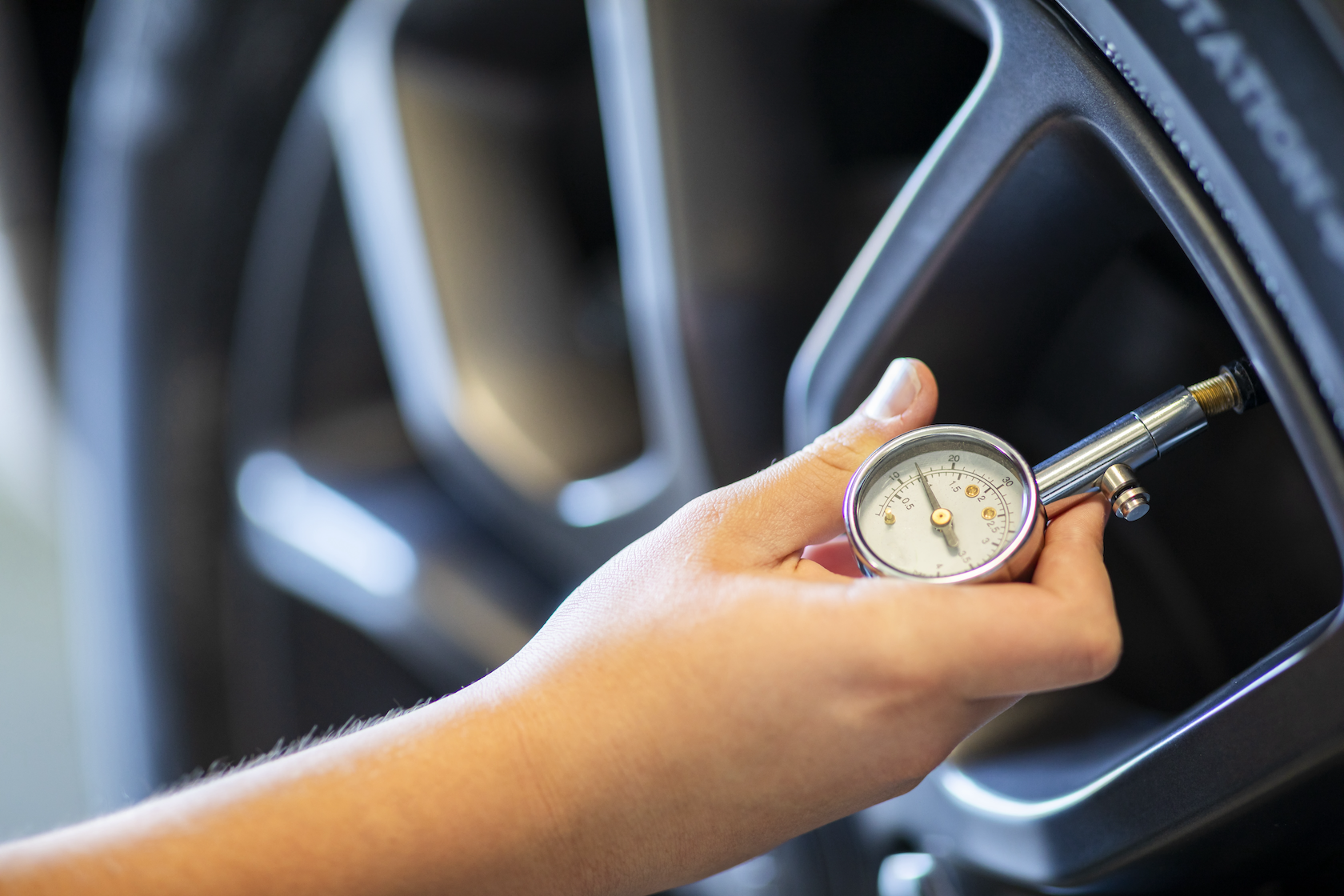

As the colder months approach, it’s crucial to ensure that your vehicle is in optimal condition to handle the changes in temperature. One often overlooked component is the Tire Pressure Monitoring System (TPMS). This system is essential for maintaining proper tire pressure, ensuring safety, and enhancing vehicle performance. In this month’s blog post, we dive into different types of TPMS, their purpose, common problems and their signs, and what to do if your TPMS warning light illuminates.
Types of TPMS
There are two main types of TPMS:
- Direct TPMS: This system uses sensors mounted on each wheel to measure the air pressure in each tire. These sensors relay real-time pressure information to the vehicle’s computer system. If the pressure drops below a certain level, the system alerts the driver through a dashboard warning light.
- Indirect TPMS: Instead of measuring the actual pressure, this system uses wheel speed sensors from the Anti-lock Braking System (ABS) to detect differences in rotational speed. Underinflated tires rotate at a different speed compared to properly inflated ones, triggering a warning.
Purpose of TPMS
The primary purpose of TPMS is to warn you when one or more tires are significantly under-inflated, which can create unsafe driving conditions.
Maintaining the correct tire pressure is crucial for several reasons:
- Safety: Properly inflated tires provide better traction, handling, and braking performance.
- Fuel Efficiency: Correct tire pressure helps optimize fuel consumption.
- Tire Longevity: Maintaining the correct pressure extends the lifespan of your tires.
- Environmental Impact: Properly inflated tires reduce CO2 emissions, contributing to a cleaner environment.
Common Problems and Signs of TPMS Issues
Despite its benefits, TPMS can encounter problems, especially with changes in temperature. Here are some common issues and their signs:
- Sensor Battery Failure: Direct TPMS sensors are powered by batteries that can last 5-10 years. When these batteries die, the sensor stops working, triggering a TPMS warning light.
- Sensor Damage: Harsh driving conditions, potholes, or improper tire changes can damage the sensors, leading to malfunctions.
- False Warnings: Indirect TPMS can sometimes give false warnings due to uneven tire wear or different tire brands and sizes.
- Temperature Fluctuations: Cold weather can cause tire pressure to drop, leading to frequent TPMS alerts. Regular checks are essential during fall and winter.
Handling TPMS Warnings
If your TPMS light comes on, follow these steps to address the issue:
- Check Tire Pressure: Use a reliable tire pressure gauge to check and adjust the pressure of all tires, including the spare. If the light stays on, it might indicate a sensor issue.
- Inspect for Damage: Look for visible damage to the sensors or tires. If you find any, it’s best to consult a service professional.
- Reset the System: Some vehicles have a TPMS reset button. Refer to your owner’s manual for instructions on how to reset the system after adjusting tire pressure.
- Professional Diagnosis: If the problem persists, consult with a service professional. They can use specialized tools to diagnose and replace faulty sensors or recalibrate the system.
The TPMS is a critical component of your vehicle’s safety and performance, especially as we head into colder weather. Regular maintenance and awareness of common issues can help keep your TPMS functioning properly, ensuring safe and efficient drives. By paying attention to the signs of TPMS issues and addressing them promptly, you can avoid bigger problems down the road and enjoy a worry-free winter season. If you would like your TPMS inspected, contact the service professionals at Car Kings to schedule an appointment.
